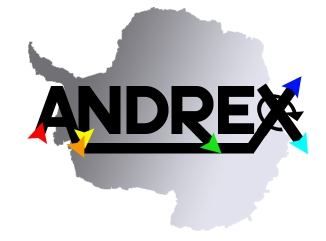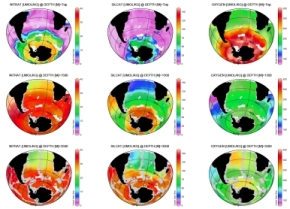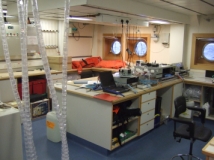Oxygen and nutrients
The main ANDREX nutrients webpage can be found here. Nutrients are defined as elements used in the production of organic matter during photosynthesis in the upper ocean. Whilst the term nutrients has also been applied to trace chemicals such as iron, in this case focus is on the 'traditional' elements of nitrate, phosphate and silicate.
These constitents are removed from the surface layers of the ocean by living organisms as they incorporate them into cells, tissues and extracellular structures, with oxygen generated as a by-product. This biogenic material can then decompose (this time consuming oxygen see below), returning the nutrients to the water column (see Redfield equation below).
The different rates at which these processes occur can affect the distribution of these chemicals in the world's water masses e.g. the slow remineralisation of silica skeletons as compared to soft tissue (predominated by nitrogen and silica) leads to an enrichment of silicate in older waters. Ths facet can lead to silica being used a tracer of ocean circulation.
On ANDREX, nutrients and oxygen were analysed by a team from NOC, with oxygen investigated by Winkler titration, and nutrients using an autoanalyser - this mixes chemical reagents with seawater sample aliquots causing the nitrate, phosphate and silicate present to under a colour change. The magniude of this reaction is then detected and quantified using spectrophotmetry. For a more detailed description of this process and the instrumentation involved, see the ANDREX@NOC nutrients webpage.
REFERENCE:
Key, R. M., A. Kozyr, C. L. Sabine, K. Lee, R. Wanninkhof, J. L. Bullister, R. A. Feely, F. J. Millero, C. Mordy, and T.-H. Peng (2004), A global ocean carbon climatology: Results from Global Data Analysis Project (GLODAP), Global Biogeochem.
Cycles, 18, GB4031, doi:10.1029/2004GB002247











